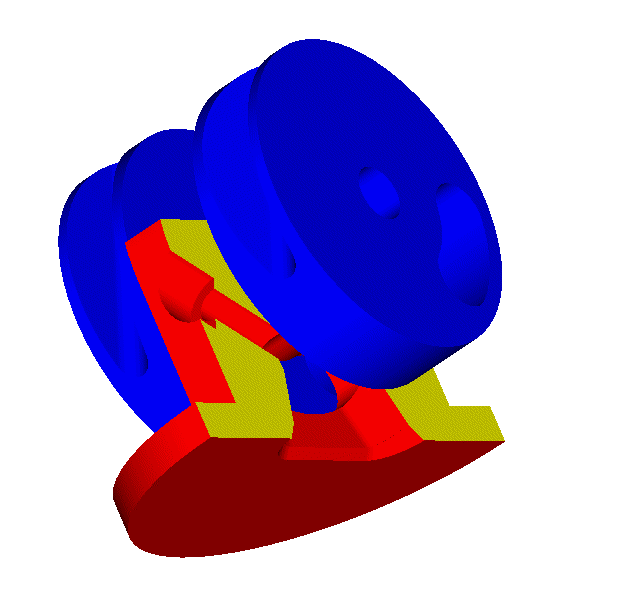My pleasure Martin. Take a look at the above picture. Jot down the scales' reading, remove the piston from the con rod, let the con rod rest on the scales again and add a wire hook and a collection of nuts or washers to the scales until the reading is what you want it to be (50% of the original weight in the above example).
Attach the wire hook with the nuts to the con rod's small end and let the crankshaft rest on two beams, like in the picture below. First make sure that the beams are exactly horizontal by putting a piece of tubing (or a bottle) on them and adjusting their heights until the tube does not want to roll any more.
Attachment 309191
Now if we put the crankshaft on the beams, it will probably roll until the bob-weights are either at the highest or at the lowest point, in which case we will have to add or otherwise remove material from the bob-weights.
Let's assume that the bob-weights move to the lowest point. Then we add extra weight (some more nuts or washers) to the wire hook until the crankshaft will stay in any position on the beams without a tendency to turn. We have now created the
torque that is necessary to keep the crankshaft in equilibrium.
Example: We have an engine with a stroke of 54,5 mm. And we had to attach 80 grams of extra weight to the hook in order to reach equilibrium.
This weight acts via the con rod on the crank pin radius (half the engine stroke), so it generates a torque of 80 * (54,5 / 2) = 80 * 27,25 = 2180 gram*mm.
The bob-weights had a tendency to move to the lowest point, indicating that they are too heavy, so we have to drill holes in them.
The total mass of these holes, multiplied by the distance from the holes' centers to the crankshaft center line, also generates a torque.
Let's assume that we can drill a hole in each bob-weight sidewall, opposite the crank pin, with its center 35 mm away from the crankshaft center line.
In order to generate the same 2180 g.mm torque, the total mass from these holes must be 2180 / 35 = 62,28 gram.
One hole in each bob-weight, that's two holes in total. One hole should then equal 62,28 / 2 = 31,14 gram.
The specific mass of steel is 0,00785 gram / mm³, so the volume of each hole must be 31,14 / 0,00785 = 3967 mm³.
Let's assume that each bob-weight has a thickness of 20 mm. That is how deep we can drill (through and through).
Then the cross-section area of each hole must be 3967 / 20 = 198,35 mm².
Its diameter must then be SQRT (198,35 / (pi/4) ) = SQRT ( 198,35 / 0,7854 ) = SQRT (252,55) = 15,9 mm.
Obviously the further away from the crankshaft center line you can drill these holes, the smaller they need to be.
Piece of cake, isn't it?
Now how about that teaser? Any takers?





 Reply With Quote
Reply With Quote





 Promise we won't tell anyone
Promise we won't tell anyone 

 .
.
Bookmarks